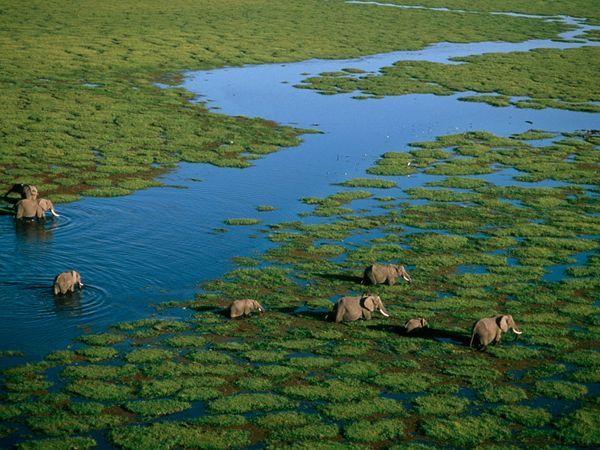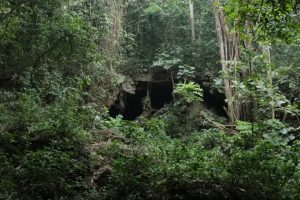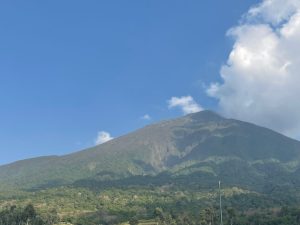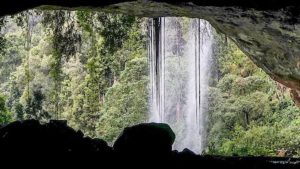What is the Green Season in East Africa?
The Green Season in East Africa refers to the period of the year when the rains transform the landscapes into lush, vibrant scenery. In most parts of Kenya, Tanzania, Uganda, and Rwanda, the Green Season falls between March and May, with a shorter rainy season in November. During this time, the savannahs are greener, rivers swell, and wildflowers bloom, creating a breathtaking contrast to the dry and dusty plains of the peak safari months. Although often labeled the “rainy season,” the Green Season is far from constant downpours; showers are often short and dramatic, usually falling in the late afternoon or night, leaving plenty of sunshine during the day for wildlife viewing and exploration. Travelling East Africa in the Green Season
When is the Green Season in East Africa?
The Green Season occurs twice a year in East Africa. The long rains typically last from March through May, while the short rains arrive around late October or November and last into early December. These seasonal rains vary slightly depending on the region. For example, coastal areas like Zanzibar may experience heavier rainfall, while certain highland regions such as the Ngorongoro Crater in Tanzania enjoy cooler, misty conditions. Planning travel around these periods allows visitors to take advantage of the dramatic scenery and unique wildlife activity that coincide with the rains. Travelling East Africa in the Green Season
Is the Green Season a good time for safari in East Africa?
Yes, the Green Season is an excellent time for safari in East Africa, though it is less promoted compared to the dry season. Game drives during the Green Season reveal wildlife against a lush backdrop, with newborn animals visible in abundance. Predators are also highly active since calving season coincides with the rains, particularly in the Serengeti, where thousands of wildebeest give birth. Although grasses can grow taller and make spotting wildlife slightly more challenging, this adds to the thrill of the safari and allows visitors to experience a more natural and less crowded environment.
What are the advantages of travelling in the Green Season compared to the dry season?
Travelling in the Green Season has multiple advantages. Firstly, safari lodges and camps often offer significant discounts, making luxury experiences more affordable. Secondly, the crowds are smaller compared to the high season, which allows travelers to enjoy wildlife sightings without the congestion of vehicles. Thirdly, the scenery is dramatically more beautiful, with lush green plains, blooming flowers, and crystal-clear skies after rainfall. Additionally, the Green Season is one of the best times for birdwatching, as migratory species arrive from Europe and Asia, adding vibrant life to the skies.
Can you still see the Big Five during the Green Season?
Yes, travelers can see the Big Five lion, leopard, elephant, buffalo, and rhino—during the Green Season. In fact, predators may be even more active because many animals give birth at this time, providing abundant hunting opportunities. Elephants are often seen enjoying the plentiful vegetation, while lions and leopards are easier to spot against the vibrant greenery. Rhinos, which are more elusive, still inhabit key sanctuaries and national parks such as Ol Pejeta in Kenya and Ngorongoro Crater in Tanzania. The chances of witnessing predator-prey interactions increase significantly due to the abundance of vulnerable young animals.
Is the Great Migration visible in the Green Season?
The Great Migration is indeed visible in the Green Season. Between January and March, over a million wildebeest gather in the southern Serengeti for calving season, where hundreds of thousands of calves are born within weeks. By March and April, as the rains intensify, the herds begin moving northward. Although the dramatic Mara River crossings occur later in the year, travelers visiting in the Green Season witness the breathtaking spectacle of calving, predator hunts, and massive herds spread across lush landscapes. This makes it an equally rewarding alternative to the peak migration months.
How does wildlife viewing differ in the Green Season vs. dry season?
Wildlife viewing in the Green Season differs primarily in terms of landscape and animal behavior. During the dry season, animals congregate around water sources, making sightings predictable. In the Green Season, water is abundant, so wildlife disperses more widely. This creates a more authentic wilderness feel, with fewer vehicles gathered in one place. The lush landscapes also provide excellent photographic opportunities, with vibrant colors and dramatic skies enhancing safari images. Although animals may take a little longer to find, the reward is a richer and more immersive safari experience.
What birds can be seen during the Green Season in East Africa?
The Green Season is the best time for birdwatching in East Africa. Migratory birds from Europe, Asia, and Northern Africa arrive during the rains, joining the region’s already diverse birdlife. Species such as European bee-eaters, steppe eagles, and various storks are common. Wetlands and lakes, including Lake Nakuru in Kenya and Lake Manyara in Tanzania, attract flocks of flamingos and pelicans. Uganda and Rwanda also see heightened bird activity in forest reserves, where birdwatchers can spot colorful species like the great blue turaco and shoebill stork.
What is the weather like in East Africa during the Green Season?
Weather in the Green Season varies across the region but is generally warm and humid with intermittent rainfall. Rain often comes in short, heavy showers, leaving clear skies afterward. Daytime temperatures usually range between 20°C and 28°C (68°F to 82°F), depending on altitude and location. Higher areas such as the Ngorongoro Highlands or Uganda’s Bwindi Impenetrable Forest may be cooler, while coastal regions like Zanzibar remain hot and humid. Although some roads may become muddy, most safari destinations remain accessible, especially with the use of 4×4 vehicles.
Which national parks are best to visit in the Green Season?
Several national parks shine during the Green Season. The Serengeti National Park in Tanzania is ideal for witnessing the wildebeest calving. Ngorongoro Crater offers concentrated wildlife viewing year-round, with particularly striking scenery during the rains. In Kenya, the Masai Mara remains excellent for predator activity and fewer tourist crowds. Amboseli National Park features stunning views of Mount Kilimanjaro against green backdrops. Uganda and Rwanda are perfect for gorilla and chimpanzee trekking, as the dense forests are at their most vibrant. For birdwatchers, lakes like Nakuru, Naivasha, and Manyara provide outstanding opportunities.
Are beach destinations like Zanzibar and Mombasa good in the Green Season?
Beach destinations such as Zanzibar, Mombasa, and Diani Beach remain popular during the Green Season, though they receive heavier rainfall than inland areas. Rain showers are often brief, allowing plenty of time for sunbathing and water activities. Prices for beachfront resorts are lower, making luxury stays more affordable. The lush greenery enhances the beauty of coastal landscapes, and cultural tours in Stone Town or spice plantations are less crowded. However, travelers should be prepared for occasional interruptions to outdoor excursions due to rainfall.
What should you pack for East Africa in the Green Season?
Packing for the Green Season requires preparation for both sun and rain. Essential items include lightweight, quick-dry clothing, waterproof jackets, and sturdy walking shoes or boots for muddy conditions. Neutral-colored safari clothing is recommended for game drives, while brighter, casual attire suits beach destinations. A wide-brimmed hat, sunscreen, and insect repellent are crucial. For photographers, rain covers for cameras and waterproof bags help protect gear. Since evenings can be cooler in highland areas, carrying a light sweater or fleece is advisable.
Is malaria more common during the Green Season?
Malaria risks can be higher in the Green Season because mosquitoes breed in the wet conditions. Travelers are strongly advised to take preventive measures such as prophylactic medication, wearing insect-repellent clothing, and using mosquito nets at night. Many lodges and camps provide treated nets and mosquito protection, but personal precautions remain essential. With proper preparation, malaria should not deter travelers from experiencing East Africa during the Green Season.
Do safari lodges and camps offer discounts in the Green Season?
Yes, most safari lodges, camps, and hotels offer significant discounts during the Green Season. Luxury lodges that may be expensive during peak season become more accessible, allowing travelers to enjoy high-end safari experiences at reduced rates. These discounts often extend to packages that include transport, meals, and guided activities. The affordability of the Green Season is one of its greatest advantages, especially for travelers who want to experience premium safaris without the high-season costs.Travelling East Africa in the Green Season
Why consider East Africa in the Green Season?
The Green Season is one of East Africa’s most rewarding travel periods. Travelers enjoy stunning landscapes, dramatic wildlife activity, excellent birding, and reduced travel costs. With fewer tourists, safaris feel more private and authentic, while lodges and guides provide more personalized attention. Although rain may pose minor challenges, the advantages far outweigh them. For travelers seeking value, beauty, and unique wildlife encounters, the Green Season is not just a viable option—it is one of the region’s best-kept secrets. Travelling East Africa in the Green Season




